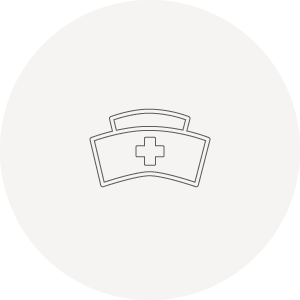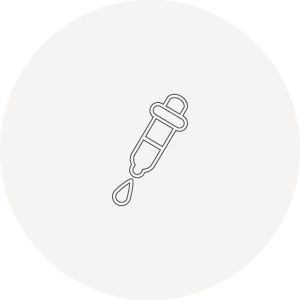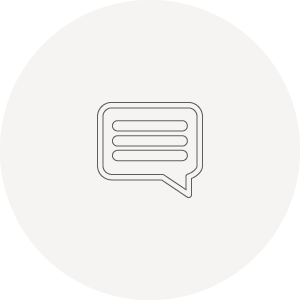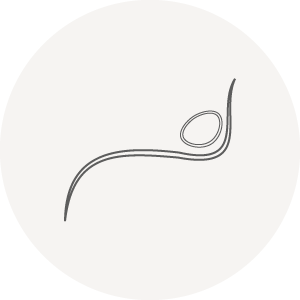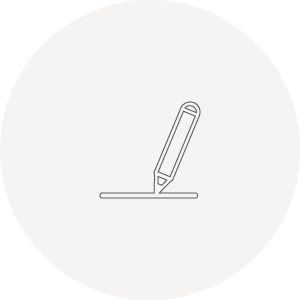The role of the chin in facial harmony is often underestimated.
A receding or protruding chin is frequently perceived as very bothersome, and many people also feel uncomfortable with a double chin. Fortunately, both the chin and double chin can be corrected with relatively minor surgical procedures. Small operations, implants, and fillers can help adjust the shape of the chin to better match the face, restoring harmonious proportions and boosting self-confidence. In some cases, an orthodontic procedure may be necessary. We also frequently perform chin correction in combination with rhinoplasty.
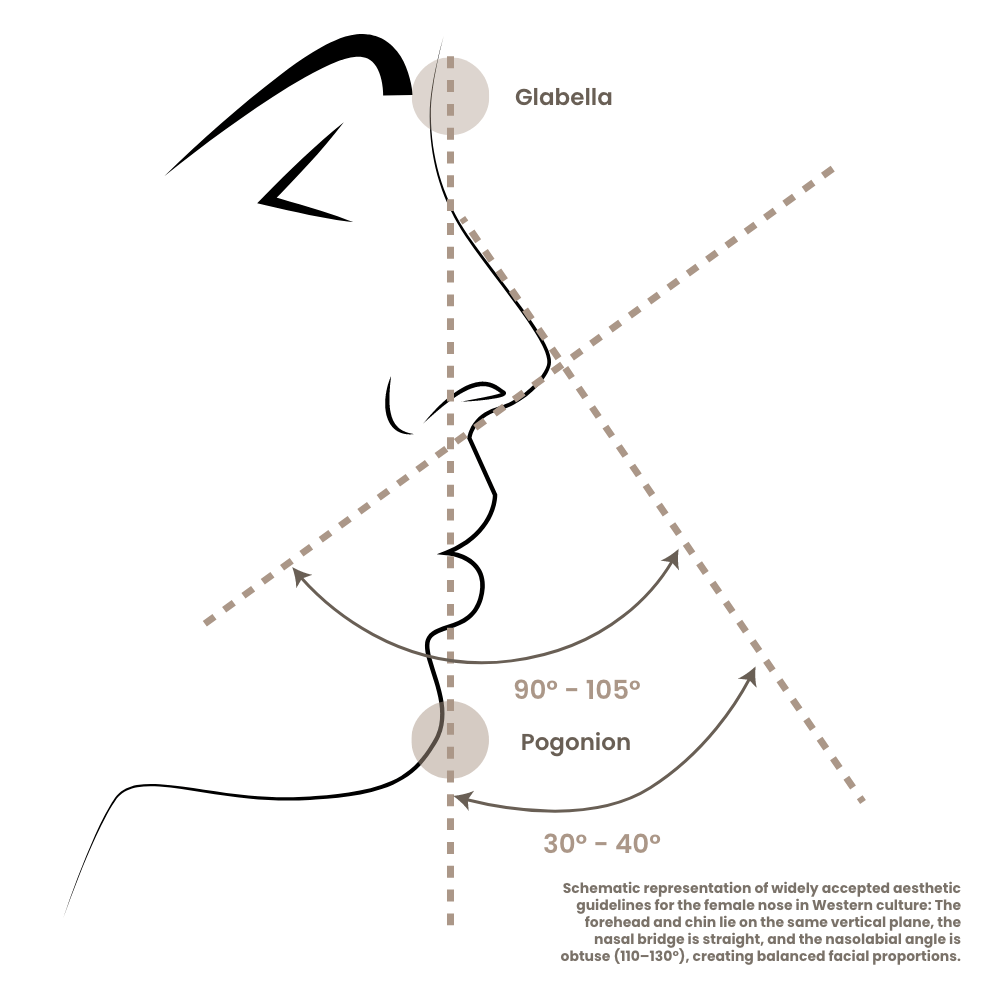
Chin Correction: Chin Shapes and Corresponding Corrections
Many people think that only the nose plays a central role in the face — but that’s not the case. The shape of the chin also plays a key role in facial harmony. The chin is important for facial proportions and strongly influences the overall appearance. Chin correction can significantly and permanently improve the facial profile. In combination with rhinoplasty, an adjusted chin interestingly makes the nose appear shorter. A corrected chin therefore affects not only the appearance of the chin itself but also the visual impression of the nose and neck.
In the harmonious proportions of the face, the length of the chin plays a crucial role. In an ideally proportioned face, the chin, upper/lower lips, and the foremost point of the forehead form one straight line. If the chin lies behind this line, it is referred to as a receding chin — this makes the nose appear larger and longer. If the chin, however, extends too far forward, it is called a protruding chin, which can give the face a harder or more dominant expression.
The Different Types of Chin Corrections
From a medical perspective, treatment is rarely necessary unless the cause is a jaw misalignment that leads to problems with swallowing, chewing, or speaking. If that is not the case, a chin correction is considered a cosmetic procedure — it refines the facial profile and enhances overall facial harmony.
There are three main types of chins for which we perform chin corrections in our clinic:
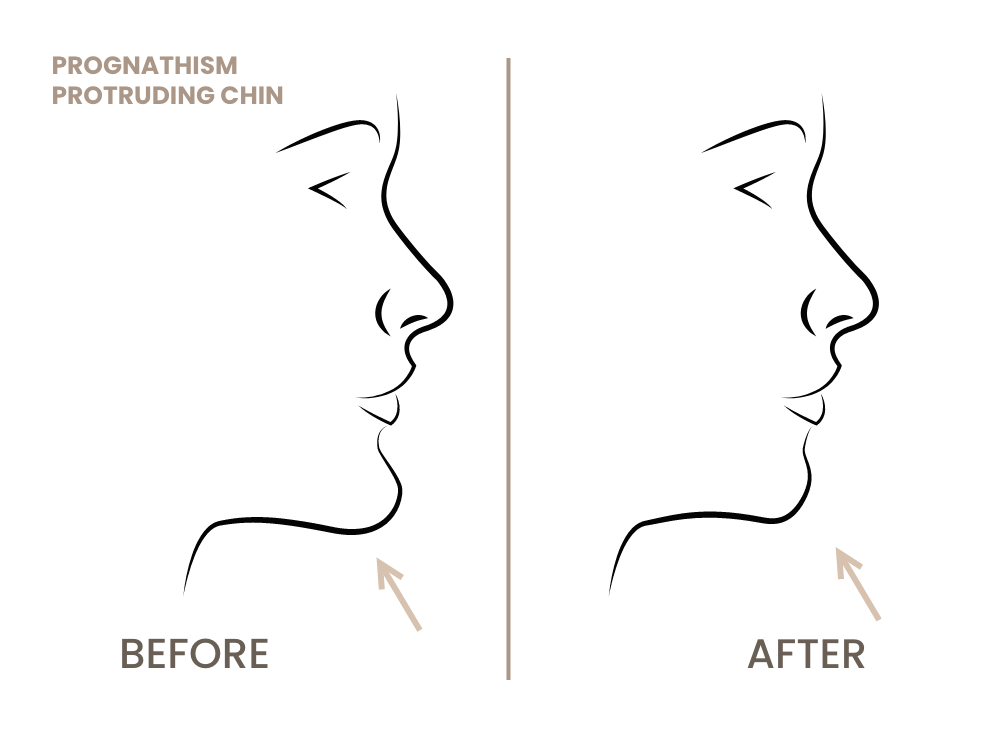
Overly Large / Protruding Chin
An unusually long chin is referred to as a protruding chin. Many people are bothered by a prominent chin because it stands out clearly in profile and often extends beyond the forehead and nose. This can make women appear more masculine. A large chin often gives the face striking, strong features and can make a person look stern or severe. People with this chin shape are often associated with traits such as courage, determination, willpower, and endurance — but also impulsiveness and impatience.
Sometimes, individuals with a very long chin have difficulty fully closing their mouth. The cause may be an overdeveloped lower jaw that is too long and large in comparison to the upper jaw. Conversely, the upper jaw may be underdeveloped, which can also make the lower jaw appear more prominent.
Correction options:
If the chin is too large and protruding but the teeth are correctly aligned and positioned, correction is almost always possible. In mild cases, the bone is simply shaved or contoured; in more severe cases, a portion of the bone may be cut and the chin tip repositioned. However, bone contouring alone is sufficient in most cases.
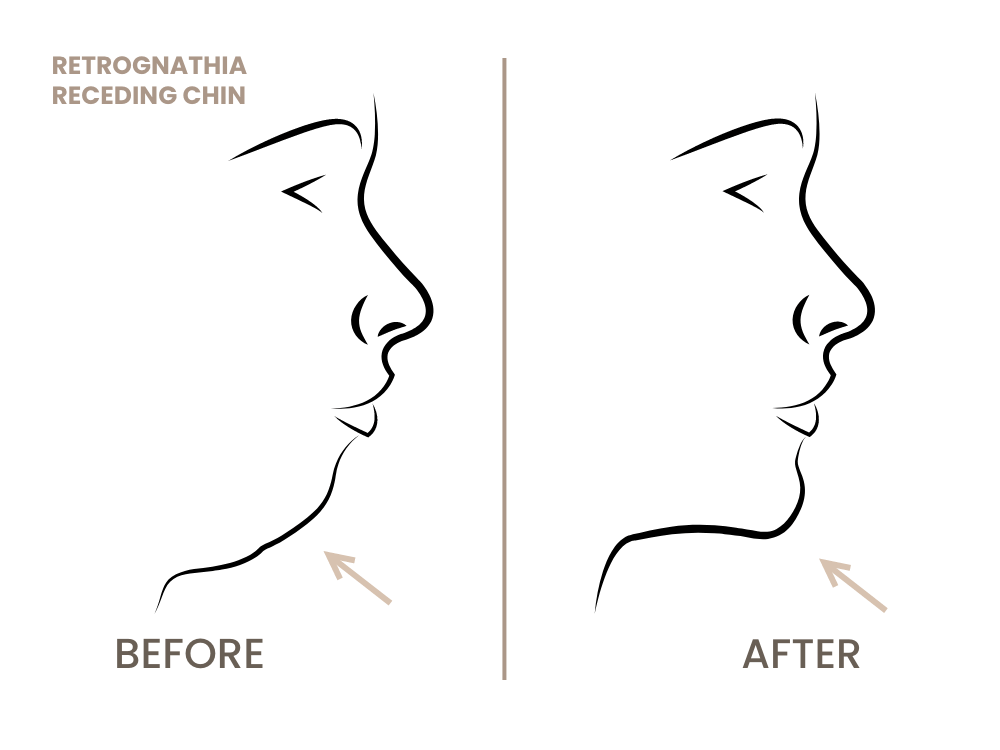
Receding Chin
A receding chin is a very common condition. Unlike a protruding chin, it appears too short and results from the backward position of the lower jaw. As a consequence, the nose and mouth seem more prominent, which is particularly noticeable in the profile view. A receding chin softens the facial contours — while this is primarily an aesthetic issue, it can significantly affect self-confidence, as the face may be perceived as less balanced or attractive. A surgical chin correction can help restore both harmony and self-esteem.
Correction options:
In mild to moderate cases — up to a projection deficit of about 10 to 12 mm — we perform chin augmentation using silicone implants. In more severe cases, an orthognathic (jaw) surgery may be necessary. Thanks to the variety of available chin implants, we can adapt the correction precisely to the patient’s facial structure — taking into account whether the lower jaw is broad or narrow, and whether a rounder or flatter chin tip is desired.
The silicone implants we use typically heal without complications and do not require replacement even after many years. Unlike breast implants, chin implants are never perceived as foreign bodies.
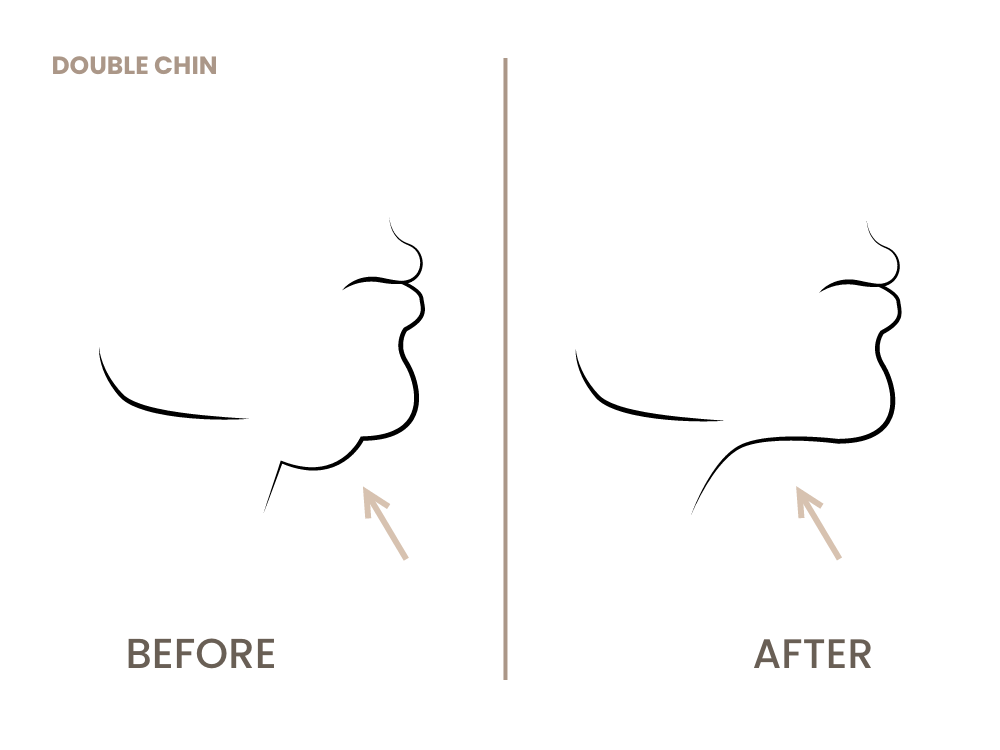
Double Chin
The correction of a double chin is by far the most common chin-related procedure. A double chin is not actually a deformity of the chin itself, but rather of the skin and soft tissue beneath it. The cause is almost always excess fatty tissue below the chin — often even in individuals of normal weight, as a hereditary predisposition frequently plays a role. However, a double chin can also develop due to loose or sagging skin, either age-related or following significant weight loss.
Correction options:
We correct a double chin either through liposuction or platysma tightening (tightening of the superficial neck muscle), and in many cases, both methods are combined. Only in extreme cases is a neck lift required to achieve the desired result.
It is not uncommon for patients to come to our clinic with what appears to be a double chin, but where the real cause lies not in excess fat or sagging skin — rather in a receding chin. In such cases, correcting the receding chin in combination with tightening the platysma (the neck’s skin muscle) or combining liposuction with skin tightening can significantly and sustainably improve both the neck contour and the overall facial profile.

